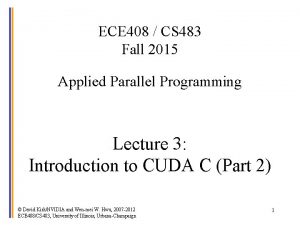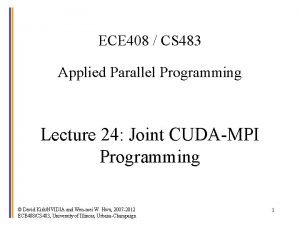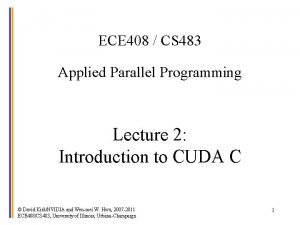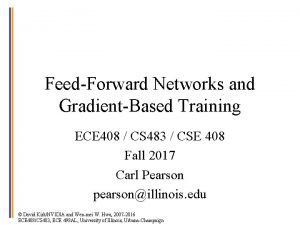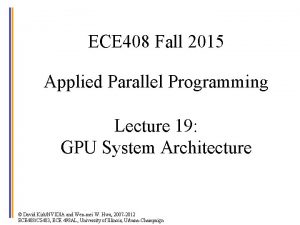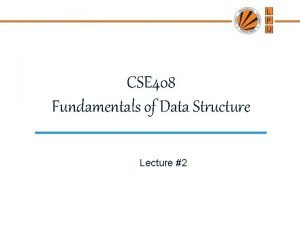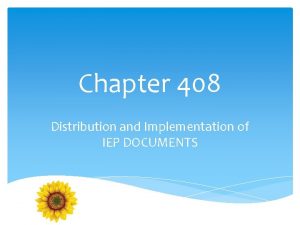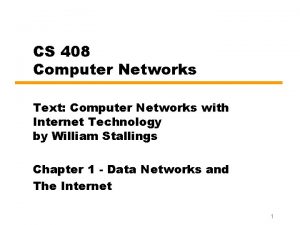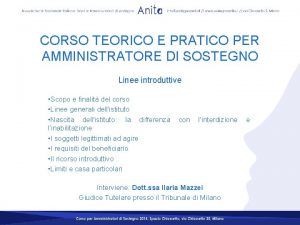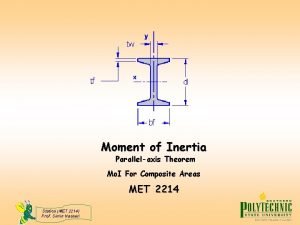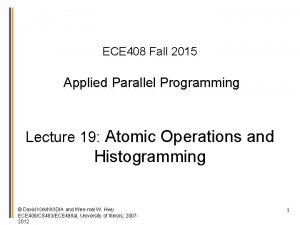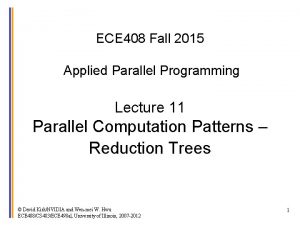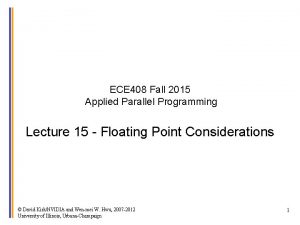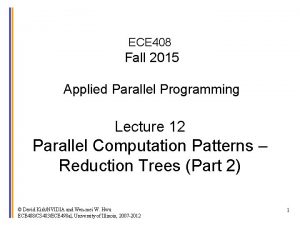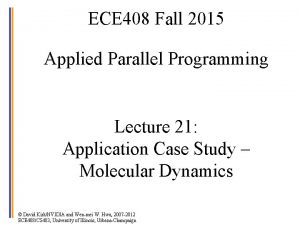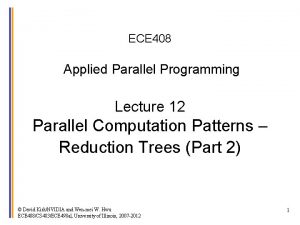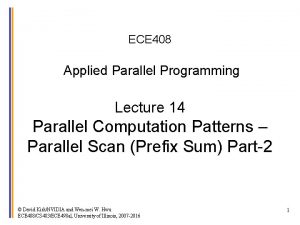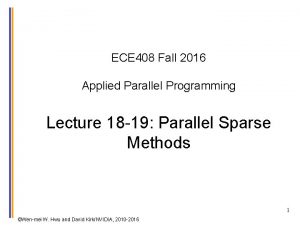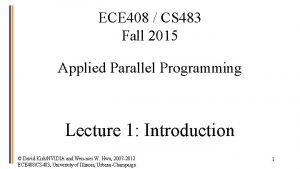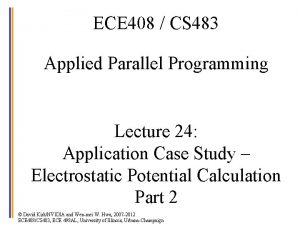ECE 408 Fall 2015 Applied Parallel Programming Lecture















- Slides: 15

ECE 408 Fall 2015 Applied Parallel Programming Lecture 11 Parallel Computation Patterns – Reduction Trees © David Kirk/NVIDIA and Wen-mei W. Hwu ECE 408/CS 483/ECE 498 al, University of Illinois, 2007 -2012 1

Objective • Introduce the concept of Reduction Trees, arguably the most widely used parallel computation pattern – Memory coalescing – Control divergence – Thread utilization © David Kirk/NVIDIA and Wen-mei W. Hwu ECE 408/CS 483/ECE 498 al, University of Illinois, 2007 -2012 2

Scales of Parallelism • Instruction Level • Data Level • Task Level • Work Level © David Kirk/NVIDIA and Wen-mei W. Hwu ECE 408/CS 483/ECE 498 al, University of Illinois, 2007 -2012 3

How would we parallelize this? H. 264 Video Encode © David Kirk/NVIDIA and Wen-mei W. Hwu ECE 408/CS 483/ECE 498 al, University of Illinois, 2007 -2012 4

What is a reduction computation • Summarize a set of input values into one value using a “reduction operation” – – – Max Min Sum Product Often with user defined reduction operation function as long as the operation • Is associative and commutative • Has a well-defined identity value (e. g. , 0 for sum) © David Kirk/NVIDIA and Wen-mei W. Hwu ECE 408/CS 483/ECE 498 al, University of Illinois, 2007 -2012 5

Partition and Summarize • A commonly used strategy for processing large input data sets – There is no required order of processing elements in a data set (associative and commutative) – Partition the data set into smaller chunks – Have each thread to process a chunk – Use a reduction tree to summarize the results from each chunk into the final answer • We will focus on the reduction tree step for now. • Google Map. Reduce and Hadoop frameworks are examples of this pattern © David Kirk/NVIDIA and Wen-mei W. Hwu ECE 408/CS 483/ECE 498 al, University of Illinois, 2007 -2012 6

A sequential reduction algorithm performs O(N) operations • Initialize the result as an identity value for the reduction operation – – Smallest possible value for max reduction Largest possible value for min reduction 0 for sum reduction 1 for product reduction • Scan through the input and perform the reduction operation between the result value and the current input value © David Kirk/NVIDIA and Wen-mei W. Hwu ECE 408/CS 483/ECE 498 al, University of Illinois, 2007 -2012 7

A parallel reduction tree algorithm performs N-1 Operations in log(N) steps 3 1 7 0 4 1 6 3 max max 3 7 4 6 max 7 6 max © David Kirk/NVIDIA and Wen-mei W. Hwu ECE 408/CS 483/ECE 498 al, University of Illinois, 2007 -2012 7 8

A Quick Analysis • For N input values, the reduction tree performs – (1/2)N + (1/4)N + (1/8)N + … (1/2 log. N)N) = N-1 operations – In Log (N) steps – 1, 000 input values take 20 steps • Assuming that we have enough execution resources – Average Parallelism (N-1)/Log(N)) • For N = 1, 000, average parallelism is 50, 000 • However, peak resource requirement is 500, 000! • This is a work-efficient parallel algorithm – The amount of work done is comparable to sequential – Many parallel algorithms are not work efficient © David Kirk/NVIDIA and Wen-mei W. Hwu ECE 408/CS 483/ECE 498 al, University of Illinois, 2007 -2012 9

Simple Vector Reduction Thread 0 0 1 0+1 2 0. . . 3 Thread 1 1 2 2+3 Thread 2 3 4 4+5 4. . 7 3 0. . 7 Thread 3 5 6 6+7 Thread 4 7 8 8+9 Thread 5 9 10 11 10+11 8. . 15 steps © David Kirk/NVIDIA and Wen-mei W. Hwu ECE 408/CS 483/ECE 498 al, University of Illinois, 2007 -2012 Partial Sum elements 10

A Sum Example Thread 0 3 1 4 2 11 Thread 1 1 7 7 Thread 2 0 4 5 14 Thread 3 1 6 3 9 Active Partial Sum elements 3 25 steps © David Kirk/NVIDIA and Wen-mei W. Hwu ECE 408/CS 483/ECE 498 al, University of Illinois, 2007 -2012 11

Simple Thread Index to Data Mapping • Each thread is responsible of an even-index location of the partial sum vector – One input is the location of responsibility • After each step, half of the threads are no longer needed • In each step, one of the inputs comes from an increasing distance away © David Kirk/NVIDIA and Wen-mei W. Hwu ECE 408/CS 483/ECE 498 al, University of Illinois, 2007 -2012 12

A Simple Thread Block Design • Each thread block takes 2* Block. Dim input elements • Each thread loads 2 elements into shared memory __shared__ float partial. Sum[2 * BLOCK_SIZE]; unsigned int tx = thread. Idx. x; unsigned int start = 2 * block. Idx. x * block. Dim. x; partial. Sum[t] = input[start + tx]; partial. Sum[block. Dim + tx] = input[start + block. Dim. x + tx]; © David Kirk/NVIDIA and Wen-mei W. Hwu ECE 408/CS 483/ECE 498 al, University of Illinois, 2007 -2012 13

The Reduction Step unsigned int stride; for (stride = 1; stride <= block. Dim. x; stride *= 2) { __syncthreads(); if (tx % stride == 0) partial. Sum[2 * tx] += partial. Sum[2 * tx + stride]; } Let’s think about __syncthreads placement? © David Kirk/NVIDIA and Wen-mei W. Hwu ECE 408/CS 483/ECE 498 al, University of Illinois, 2007 -2012 14

ANY MORE QUESTIONS? © David Kirk/NVIDIA and Wen-mei W. Hwu ECE 408/CS 483/ECE 498 al, University of Illinois, 2007 -2012 15
 Uiuc ece 408
Uiuc ece 408 Cs 483
Cs 483 Ece 408
Ece 408 Ece 408
Ece 408 Ece 408
Ece 408 01:640:244 lecture notes - lecture 15: plat, idah, farad
01:640:244 lecture notes - lecture 15: plat, idah, farad Cse 408
Cse 408 408(b)(2) checklist
408(b)(2) checklist Usace section 408
Usace section 408 Chapter 408 nyc doe
Chapter 408 nyc doe Cs 408 sabancı
Cs 408 sabancı Pub 408
Pub 408 Amministratore di sostegno lite tra fratelli
Amministratore di sostegno lite tra fratelli Map study in highway engineering
Map study in highway engineering C data types with examples
C data types with examples Moment of inertia addition
Moment of inertia addition
